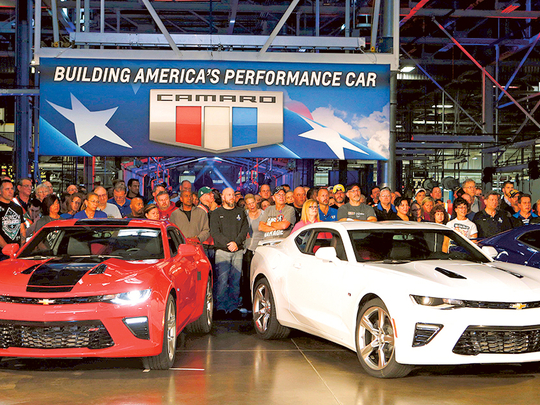
Dubai: North America and China accounted for a near 7 million of the 9.92 million vehicles that General Motors sold last year. But the last thing Mike Devereux wants to hear is that General Motors’ fortunes are beholden entirely to what happens in those two markets.
Instead, the Vice-President for Sales, Marketing and After-sales at GM International, is strident when he says that each territory counts. “GM’s Q3 earnings [released on October 21] show GM is successfully capitalising on its strengths in the US and China while addressing challenges in other parts of the world,” said Devereux, whose remit takes in the Middle East and Africa, India and Southeast Asia, South Korea and Australia. “GM International is focussed on ensuring our business model is profitable and sustainable market by market.
“The Middle East is one of GM’s key markets globally. We will continue expanding our position in the Middle East, which is the fastest-growing vehicle market outside the BRIC [Brazil, Russia, India and China] nations and where industry sales are expected to double by 2020.”
And it has been putting up the big bucks to get the growth story going across a wider geography, through a $5 billion (Dh18.4 billion) deployment announced earlier this year. This includes the $1 billion committed to expanding its base in India, “which is expected to become one of the three largest vehicle markets worldwide by 2020,” said Devereux. “This new investment will enable GM to significantly improve our manufacturing capacity in India, double Chevrolet’s market share in the country and establish a new export hub for growth markets.
“At GM International, we are executing our strategy to right size our manufacturing footprint. This is putting us in a position to become a strong competitor in markets across the region.”
Indeed, the current set of financials bear out the carmaker’s credentials for the long run. Its mid-2009 filing for bankruptcy and the way the US government stepped in to save the day do seem like a long time ago. More so, with the latest set of numbers, which show the GM brands — Chevrolet, Buick, GMC and Cadillac — combine to sell 262,993 vehicles in the US in October. And Chevrolet got to post its best October sales since 2004. (The gains also buttress the theory that the imbroglio over faulty ignition switches in the Chevrolet Cobalt and deaths associated with it have clearly had no debilitating effect whatsoever. It could be a lesson that the VW Group caught up in the diesel emissions storm should be taking to heart.)
“GM is focused on delivering market-driven portfolios wherever our products are sold,” said Devereux. “We are releasing new products backed by a customer experience through industry-leading programmes such as ‘Chevrolet Complete Care’. Customer satisfaction is rising and we are on the path to sustainable profitability in our markets.
“GM International has the right business strategy - Globally, our Q3 results yet again demonstrated GM’s strong margins and overall performance.
“We make it a priority to listen to our customers. In response, we are bringing to our markets the vehicles our customers tell us they want in order to become competitive in key segments.”
Clearly, a trait that GM is not confining to just the US and China.










